
International Research Journal of Engineering and Technology (IRJET) e-ISSN:2395-0056
Volume: 11 Issue: 09 | Sep 2024 www.irjet.net p-ISSN:2395-0072


International Research Journal of Engineering and Technology (IRJET) e-ISSN:2395-0056
Volume: 11 Issue: 09 | Sep 2024 www.irjet.net p-ISSN:2395-0072
1Arunkumar Pandi,2 Ariharan Gopal,3A C Mariappan,4G Peter pakiyaraj
1Final year B.E Marine Cadet, Department Of Marine Engineering, PSNCET ,Tirunelveli , Tamilnadu
2Final year B.E Marine Cadet, , Department Of Marine Engineering, PSNCET ,Tirunelveli ,Tamilnadu
3Assistant Professor,Deptment Of Marine Engineering, PSNCET ,Tirunelveli ,Tamilnadu
4Assistant Professor, Department Of Marine Engineering, PSNCET ,Tirunelveli ,Tamilnadu
Abstract: This paper aims to draw people’s attention towards one of the major cause of accidents at sea, its impact and the methods we can adopt to reduce the chances of accidents considerably. The paper finds slow braking rate as the key cause of maximum accidents and suggests two systems designed to increase the deceleration rate of the ships. A detailed explanation about the working and the setting up of our proposed systems ECDS (Emergency Cargo Drop Stop) and EBP (Emergency
Braking Propellers) has been provided in the course of the paper. It also draws a comparison between the pros and the cons of these systems. The study’s conclusion indicates the significance of these two systems and how it paves the way for further study on the application and benefits of these systems.
Keywords: Braking system, Cargo, Collisions, Propellers.
Anymode of transport is boundtohave accidents. Whenit comes to shipping industry; the vast oceanic area, thousands of vessels, millions metric tons of cargoes, oil, gas et cetera, holding worth of 700 billion$ and millions of seafarers sailing around the globe makes it the most vital modeoftransportandmuchmoreexposedtoaccidents.To an industry like this, safety plays the most pivotal role. Thoughsafetyaboardhassignificantlyincreasedinthelast decade as claimed by various maritime organizations but the statistics show scary figures. For one reason or the other merchant ships have continued to be involved in accidents. Theaccidentshavenotonlyresultedinfinancial lossesbuthavealsotakenlivesofofficersandcrewaboard. Moreover, the accidents at sea also damages seabed, sea depth,seasurface,floraandfauna,causemarinetrafficand ultimatelyharmthemarineecosystem.
Its adverse impact can also be seen on the weather and livelihoodofthepeople.
Thepaperdealswiththeideatocounterthemajornumber ofaccidentsofcargoshipsbytwoproposedsystems,
‘ECDS AND EBP System’ for improved deceleration of the shipstoavoidcollisionsatsea.
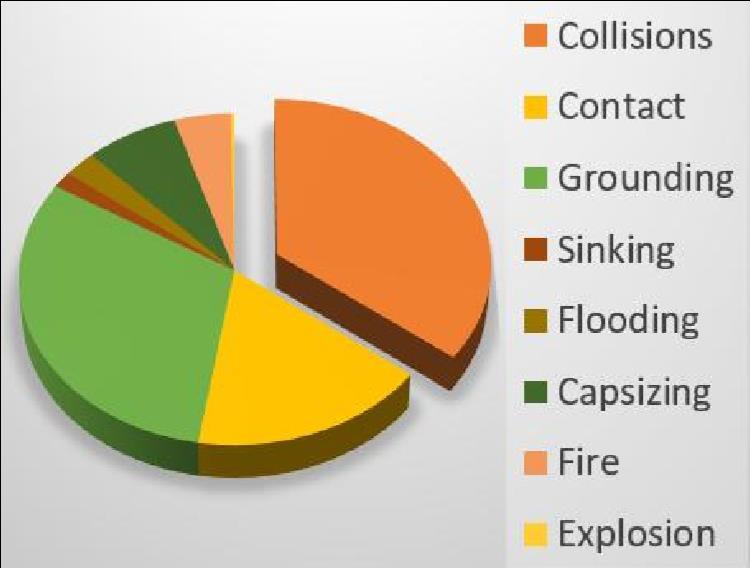
Thoughmanypreventivemeasuresaretakenandmanyare worked upon, we get big numbers of accidents annually. Whenwegothroughtheanalysisofaccidents,reasonssuch asthepoormaintenance,lackofpropertraining,equipment failure, natural calamities and primarily collisions can be found. It was reported that approximately 21325 ships involved in accidents leading to 25000 deaths and 8000 injuriesintheperiod(2007-2020)



International Research Journal of Engineering and Technology (IRJET) e-ISSN:2395-0056
Volume: 11 Issue: 09 | Sep 2024 www.irjet.net p-ISSN:2395-0072
Looking back at the analysis, we find that collisions contributeto36%ofthemishapswhilecontactdoing17% of the damage. Summing them up, we get a huge figure of 53%. So, if we focus on avoiding collisions and contact, we would prevent more than halfofmaritime disasters. While goingthroughdata,wefindthat20-25%ofvesselsinvolved in maritime accidents are cargo Out of 15,103 ships involved in accidents during (20072020) 2848 were cargo vesselsasshownbytheGraph.
3. PROBLEM FINDING:
On an average, the length of cargo ship is 200-300 meters and the average speed is 20-30 knots and the average time to bring such a ship to rest is about25-30minutes.
This period is more than enough for ships to collide with other ships, periphery of ports and icebergs. Here, the major problem occurs.
3.1 PROBLEM SOLVING:
To cater to the problem as stated above, all we need to do is focus on reducing the collisions & contacttypeaccidentsoncargocontainersshipsby reducing the time to stop or decelerate a vessel.
Ouridearevolvesaroundthisverypoint.
4. PRINCIPLE INVOLVED IN DECELERATION/ BRAKING OF
The reason behind the collisions that is major part of accidents at sea is the slow deceleration of ship. When we lookintothefunctioningof aship,theshipsarebroughtto rest with the help of propellers and varying function of engine.Therearespecificallytwotypesofpropellers
4.1 Fixed pitch propellers: In this case firstly the RPM is lowered, then it is brought to no thrust position and ultimatelythepropellerisrotatedinreversedirectionto acquire reversal or resistive thrust.
4.2 Controllable pitch propellers: In this case the propeller is brought to no thrust position by bringing the blades at parallel orientation and here the reversal thrust is acquired by reversing the angle of the blades.
The main concept behind the deceleration of ship is countering the forward thrust by the resistance of the ship.When a ship moves in water, there is a viscous drag generated between the submerged hull surface and water particles in contact with the hull.
Thedragisgeneratedduetotheviscosityofwaterand is directly proportional to the wetted surface area of
the ship and varies to the square of velocity of ship. Viscous Drag ∝ (p)(S)(v^2)
Where,p=densityof water, S= wettedsurfacearea,v= velocityofship.
Therefore, the primary aim of stopping any moving object,istoincreasethedragforceexperienced bythe body. This can be done primarily in two ways:
Increasingthewettedsurfaceareaofship.
Decrease the magnitude or change the directionofthrustonship.
Ourideafocusesonexecutingboththeways.As a solution to the emergency deceleration problems, we give you the
ECDS(EmergencyCargoDropStop)and EBP (Emergency Braking Propellers).
4.3 ECDS (Emergency Cargo Drop Stop):Thissystem suggests some part of cargoes on ship (10-15%) to be kept in specially designed boxes that would be ferromagnetic in nature or coated with ferromagnetic substanceswiththeabilitytobewaterrepellent.These boxes would be kept on a sliding platform in the hold hanged with ropes operated on free fall or hydraulic power system. The boxes would be designed such as that when hanged, these boxes would open into two halves making 45degree angle between them (Figure 2&Figure3), this would increase the exposed area and when allowed to touch the sea-bed (when length is approachable)couldactasPOOLtypeanchor.
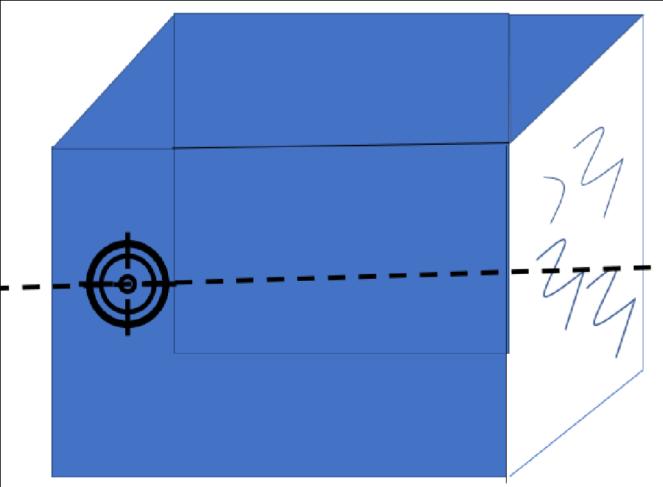
Figure2: This illustrates the way the ECDS containers would be hinged.

Volume: 11 Issue: 09 | Sep 2024 www.irjet.net p-ISSN:2395-0072
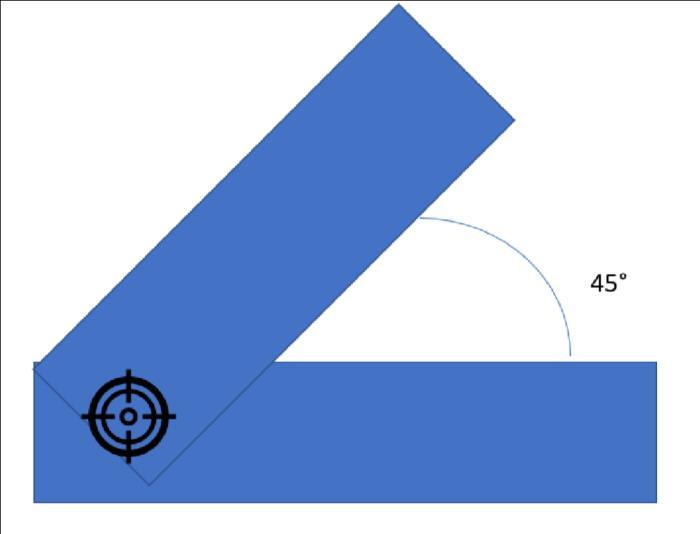
Figure 3. This is the 2 D view of how the ECDS containers would open up into two parts. Black circle symbolizes the hinge point in both figures 2 & 3
This system also suggests the incorporation of the thick electromagnetic strips running across the hull below the water line. The strip will activate when the ECDS containers are dropped off through strings or any rope in the sea water, precisely it will activate as soon as the ECDS system starts acting. When situation suggest a condition of extreme emergency and urgency to decelerate the ship, the boxes with the platform would slide outwards the hull depicting fin like structures and the platforms would fall and stick to the hull and the boxes will be dropped. As soon as the boxes are made to drop into the water, the electromagnets running across the hull will be activated and the boxes would be made to stick to the electromagnetic strips. The boxes would enhance the amount of the area exposed to the water exponentially adding up the drag force, ultimately increasing the resistive force.
When the ship’s speed is lowered as per the need, the electromagnets will be deactivated and the cargoes will be heaved up thereafter.
The specially designed ECDS boxes can also be dropped under free fall to the sea bed when the sea bed is at an approachable distance and thus can act as anchors.
This ECDS system would come into function with the help ofgearbox(installationofthisshouldbenearthetailshaft ofpropellerasperouridea)Whichwillbedesignedinsuch a way that the translational motion of the platform with ECDScontainersstartsassoonasthepropeller’sRPMisset forlowering(inthecaseoffixedpitch)orwhentheblades start orienting themselves in parallel direction (in case of controllablepitch).
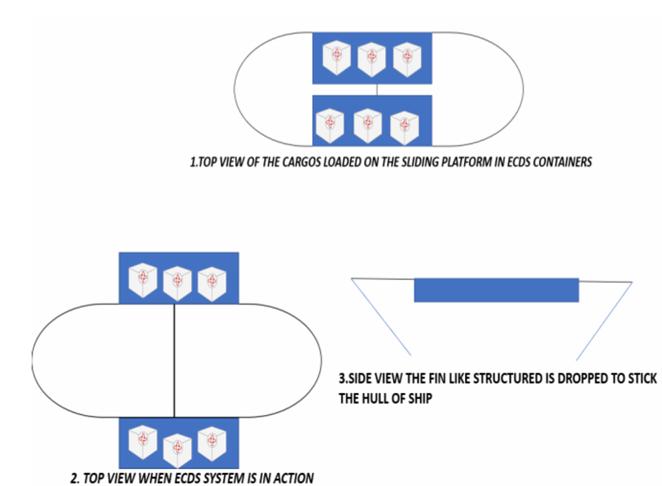
Figure 4. This shows the mechanism of the sliding platform that would be used to keep and dispose ECDS containers in the sea as per our design. White boxes depict ECDS containers and blue structures is the sliding platform
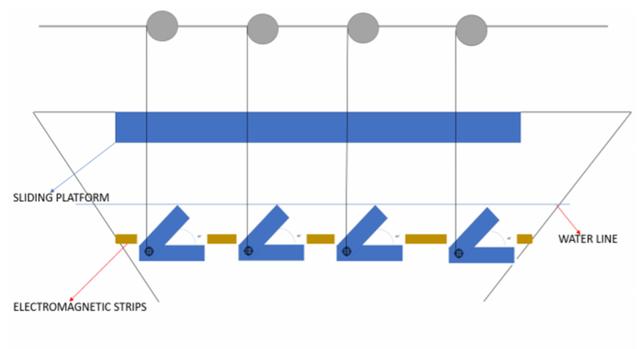
Figure 5: This is shown how operated ECDS system would look like. Brown strip symbolizes the electromagnetic strip while the grey structures could be either some pulley operated system, any mechanical load lifting or lowering device or some hydraulic crane type machinery.
The second part of our solution suggest installation of addons propeller (Figure 5) to the already existing propellers but these propellers will be placed in the front region of ships. These will completely fit into ship’s side walls maintaining the streamline shape of ships and will only come out when EBP mechanism is initiated. They will then drop into sea to the level of stern propeller (figure 6) and will start to operate in a directionsoasto opposethemotionofships.Thiswill increasetheresistanceofferedtotheshipsmotion.The sterns propeller rpm will be then reduced and directionreversedsothatitreachesnothrustposition. The speed of stern propeller will be then increased in opposite direction so that it matches the speed of EBP

International Research Journal of Engineering and Technology (IRJET) e-ISSN:2395-0056
Volume: 11 Issue: 09 | Sep 2024 www.irjet.net p-ISSN:2395-0072
and both the propellers end up having the same RPM thus maintaining the stability of ship. After the successful deceleration, these EBP can be retracted backtotheiroriginalposition.
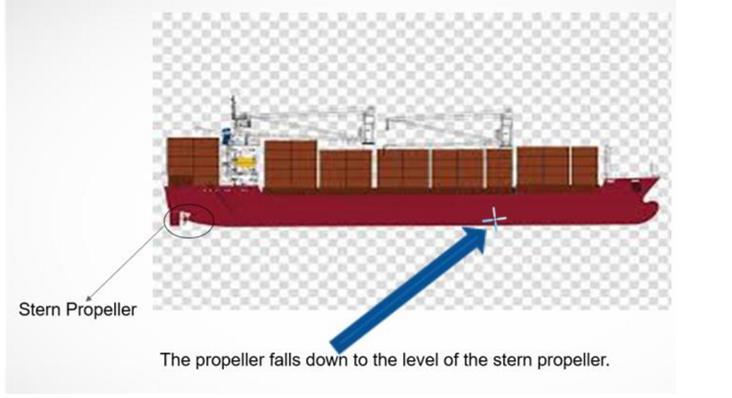
Figure 6: This figure shows the mechanism of Emergency breakingpropellersSystem
A ship’s hull design will be altered so as to provide space for a compartment which canaccommodate a propeller on eachsidealongwiththehydraulicsandwhichwillopenup whenEBPisinitiated.
The EBP is a safe, quick and a reusable method of emergencybraking.
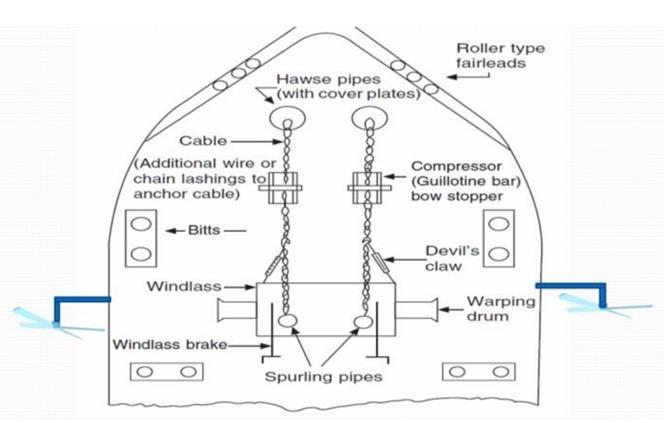
Figure7:Thisshowsthesuggestedinstallationofaddon propellers.Bluestructuresdepictsthoseaddon propellers.
5. ADVANDAGES
Avoid collisions by fast deceleration.
These ideas if implemented can prove to be crucial in life threatening situations.
Reduced number of collisions implying greater profit for the owners.
Effective even in extreme weather conditions.
Quick and effective braking system with low initiation time.
Option of using one braking method at a time or combining them according to the situations demand.
We are further deliberating upon the use of the EBP (Emergency Braking Propellers) as add on propellers forsteeringshipsinregionsinvolvingsharpturns.This will increase the overall maneuverability of the ship. We are also concentrating on the financial part of the entire project. Efforts are being put into making these designs as economical as possible. The mechanism for the simultaneous use of ECDS and EBP, which offers a benefitoffurtherreductionofbreakingtimewhichcan prove to be of immense importance when faced with crucial situations of life and death is also a point of discussion.
This paper clearly shows the ill impacts that an accidenthasonourindustryandalsoholdsslowrateof braking as the major cause of accidents at sea. The abovediscusseddesignsaremeanstocountertheslow deceleration rate of ships. These can prove to be very promising in dangerous situations of collision and could be helpful in developing an effective and more efficient crash maneuvering system. Though the installation of such system might currently be a bit heavyonthepurse,theprimaryconcernandmotiveof thisprojectisdevelopmentofasaferenvironment and findingsolutionstoasituationwhichislifethreatening. Major Economies and global maritime leaders should comeforwardtoworkonthisprojectastheprojecthas ascopeforfurtherdevelopments.
[1]MarineAccidentandIncidentInvestigation.Annual Report 2019. Japan Transport Safety Board. Tokyo, Japan,December2019,pp153-194.
[2] Carlton, John. Marine Propellers and Propulsion: Resistance and Propulsion. Butterworth-Heinemann. Cambridge,UK,2019,pp313365.
[3] Kerwin, Justin E., Annual Review of Fluid Mechanics: Marine Propellers. Department of Ocean Engineering, MIT, Vol. 18, Cambridge, UK. 1986, pp 367-405.

International Research Journal of Engineering and Technology (IRJET) e-ISSN:2395-0056
Volume: 11 Issue: 09 | Sep 2024 www.irjet.net p-ISSN:2395-0072
[4]Sorensen,A.J.,Ådnanes,A.K.,Fossen,T.I,&Strand, J. P. (1997, September). "A new method of thruster controlinpositioningofshipsbasedonpowercontrol". In4thIFACConferenceonManoeuvringandControlof Marine Craft (MCMC'97), Brijuni, Croatia (pp 172, p. 179).
[5] J. Dang, H. J. J. van den Boom, J. Th. Ligtelijn: The Wageningen C- and D-Series Propellers, 12th International Conference on Fast Sea Transportation FAST2013,Amsterdam.
9. BIOGRAPHY
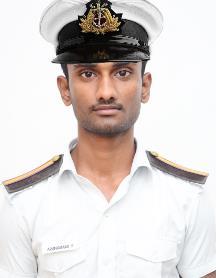
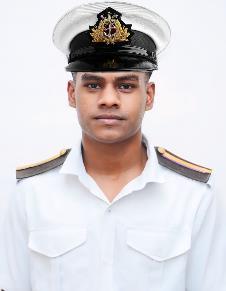


I am pursuing B.E final year Marine Engineering cadet at PSN College of Engineering & Technology, Tirunelveli, TamilNadu
I am pursuing B.E final year Marine Engineering cadet at PSN College of Engineering&Technology,Tirunelveli, TamilNadu
Project Guide cum Assistant Professor
PSN College of Engineering & Technology, Tirunelveli, Tamil Nadu. Also having 15 years’ experience in OilandGasindustries.Specializationin NDTandworkedvariesGulfCountries.
Project Guide cum Assistant Professor
PSN College of Engineering & Technology, Tirunelveli, Tamil Nadu. MEO Class-IV Marine Engineer and workedvariesCountries